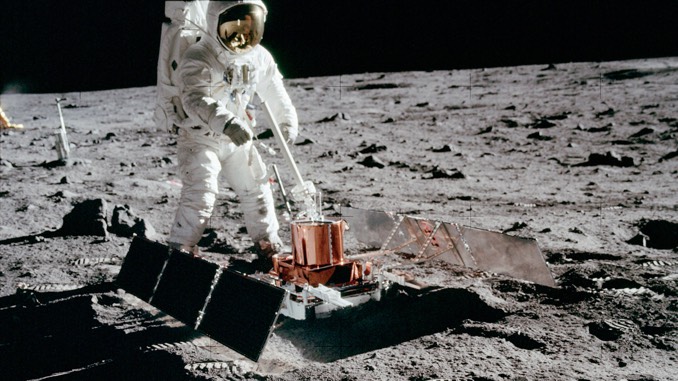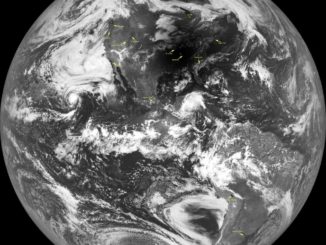
Data from seismometers left on the Moon by Apollo astronauts, a new technique for analysing the data they produced and detailed images captured by NASA’s Lunar Reconnaissance Orbiter show the moon is still shrinking as its interior slowly cools, triggering thrust faults where one section of crust is pushed over another.
In a paper published in Nature Geoscience, researchers conclude the Moon has shrunk by about 50 metres (150 feet) over the past several hundred million years.
“Our analysis gives the first evidence that these faults are still active and likely producing moonquakes today as the Moon continues to gradually cool and shrink,” said Thomas Watters, senior scientist in the Center for Earth and Planetary Studies at the Smithsonian’s National Air and Space Museum in Washington. “Some of these quakes can be fairly strong, around five on the Richter scale.”
Five Apollo crews – missions 11, 12, 14, 15 and 16 – placed seismometers on the Moon between 1969 and 1971. The Apollo 11 instrument operated for just three weeks, but the other four recorded 28 shallow moonquakes through 1977, ranging from about 2 to 5 on the Richter scale.
Watters’ team re-examined the Apollo data using a new algorithm that helped them more accurately determine the locations of the 28 observed moonquakes. Eight of them were within 30 kilometres (18.6 miles) of thrust faults visible from orbit, well within the range where strong shaking could be expected based on the size of the fault scarps.
In addition, six of the eight moonquakes happened when the Moon was near its farthest point from Earth where tidal stresses reach a peak.
“We think it’s very likely that these eight quakes were produced by faults slipping as stress built up when the lunar crust was compressed by global contraction and tidal forces, indicating that the Apollo seismometers recorded the shrinking Moon and the Moon is still tectonically active,” said Watters.
To make sure, the team ran 10,000 simulations and found just a 4 percent chance of a coincidence that could produce the same results.

Additional evidence comes from the Lunar Reconnaissance Orbiter, which has imaged more than 3,500 fault scarps, the low step-like cliffs produced by such faults. Some of those images show landslides and boulders at the bottom of relatively bright areas on the slopes of fault scarps. Because solar and space radiation gradually darken the moon’s surface, bright areas indicate soil that has been recently exposed to space. Visible tracks of boulders are another indication of seismic activity.
One of the moonquakes occurred just 13 kilometres (8 miles) from the Taurus-Littro valley where Apollo 17 astronauts Gene Cernan and Harrison Schmitt landed in 1971. The astronauts drove their lunar rover over the cliff face of the Lee-Lincoln fault scarp and examined boulders and boulder tracks indicative of quake activity. A landslide covering the southern section of the scarp provides additional evidence.
“Establishing a new network of seismometers on the lunar surface should be a priority for human exploration of the Moon, both to learn more about the Moon’s interior and to determine how much of a hazard moonquakes present,” said co-author Renee Weber, a planetary seismologist at NASA’s Marshall Space Flight Center.



